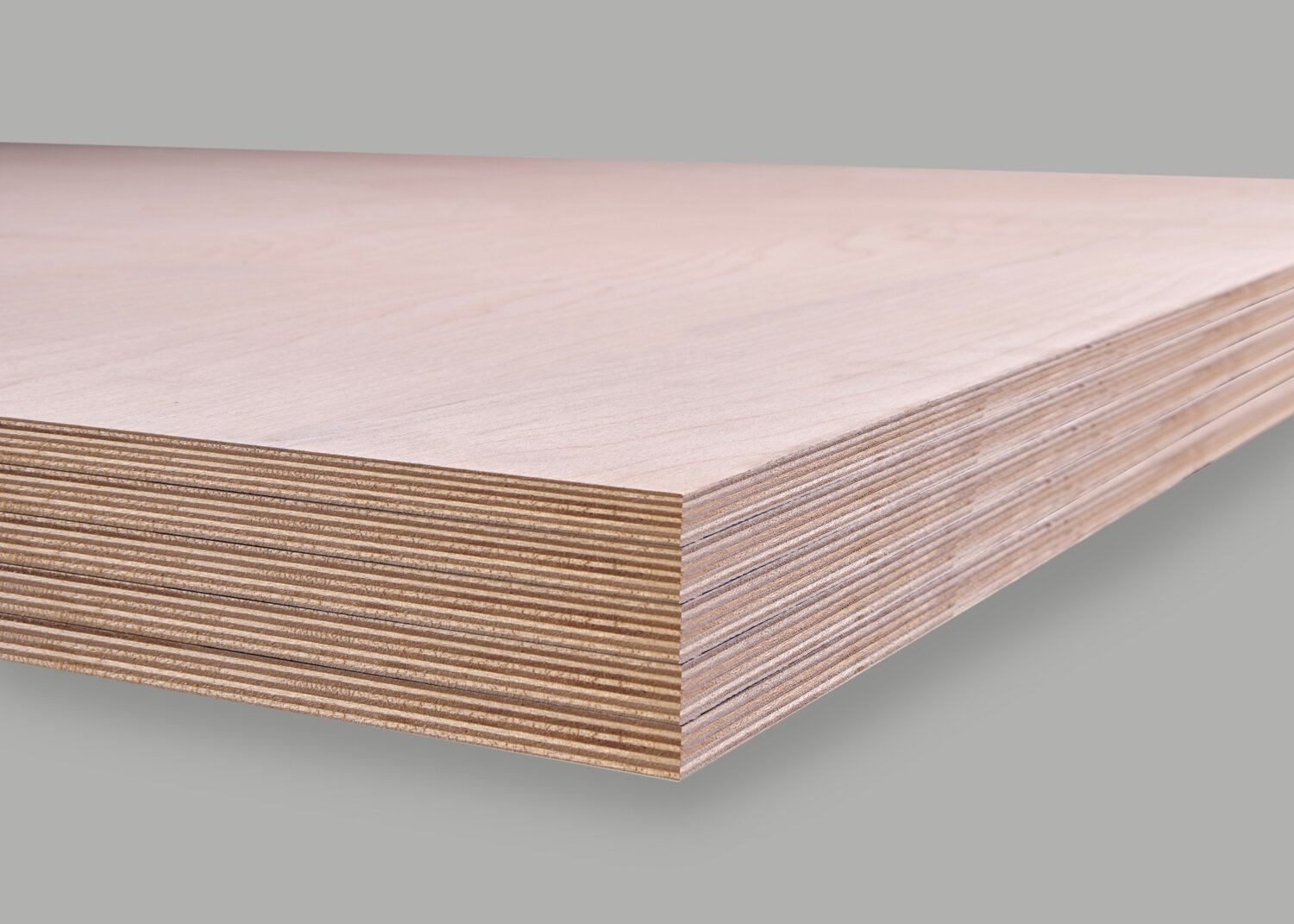
P L Y W O O D T E R M S
What you need to know before buying
FACES
A-Grade Face
An “A” face on hardwood plywood should be matched for both grain and color. All veneer splices should be book-matched for a visually pleasing appearance. There should not be any abrupt changes in color or grain between the splices. An “A” face will not permit sound knots, repaired knots or rough-cut veneer. An A face may allow slight mineral streak and/or vine marks. The number of defects such as pin knots or small burls varies according to the species of veneer. This is the best face grade on plywood normally stocked and is often used for upper-end cabinetry, architectural millwork, and quality furniture.
B-Grade Face
A “B” face on hardwood plywood should be matched for a pleasing color, but not necessarily for grain. “B” grade faces are generally very similar to “A” faces, but do allow some sound or repaired knots and some slight rough cut veneer. “B” grade faces will also allow slight mineral streak and vine marks.
C-Grade Face
A “C” face on hardwood plywood allows for unlimited pin knots and small burls. A “C” face can also contain repaired knots and sound knots. The “C” grade will also allow unlimited mineral and vine marks. A “C” face should be a sound smooth face. A “C” face is used primarily on paint grade type panels, in lower-end case work, and for cabinet interiors in upper-end cabinetry.
1 Back
Allowed to contain unlimited mineral streaks. A “1” back will not contain any repaired knots.
2 Back
A “2” back can also contain repaired knots, rough cut veneer, and unlimited mineral streak.
3 and 4 Back
This is generally referred to as a reject back. A “4” back is to be used in concealed areas where appearance is of no concern. The “4” back is most commonly used on 1/4” plywood. However, it may also be used on thicker panels when the back will.

